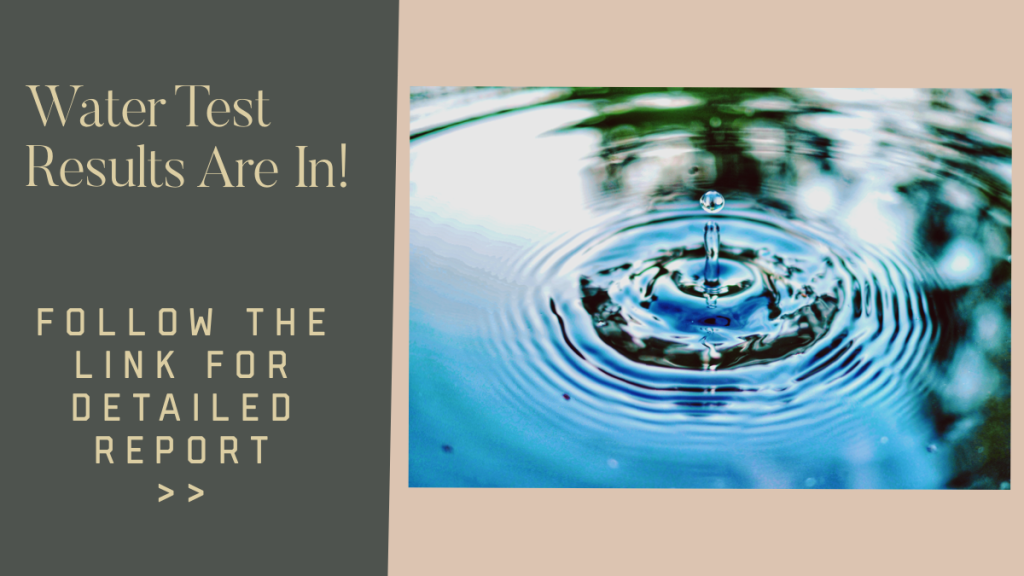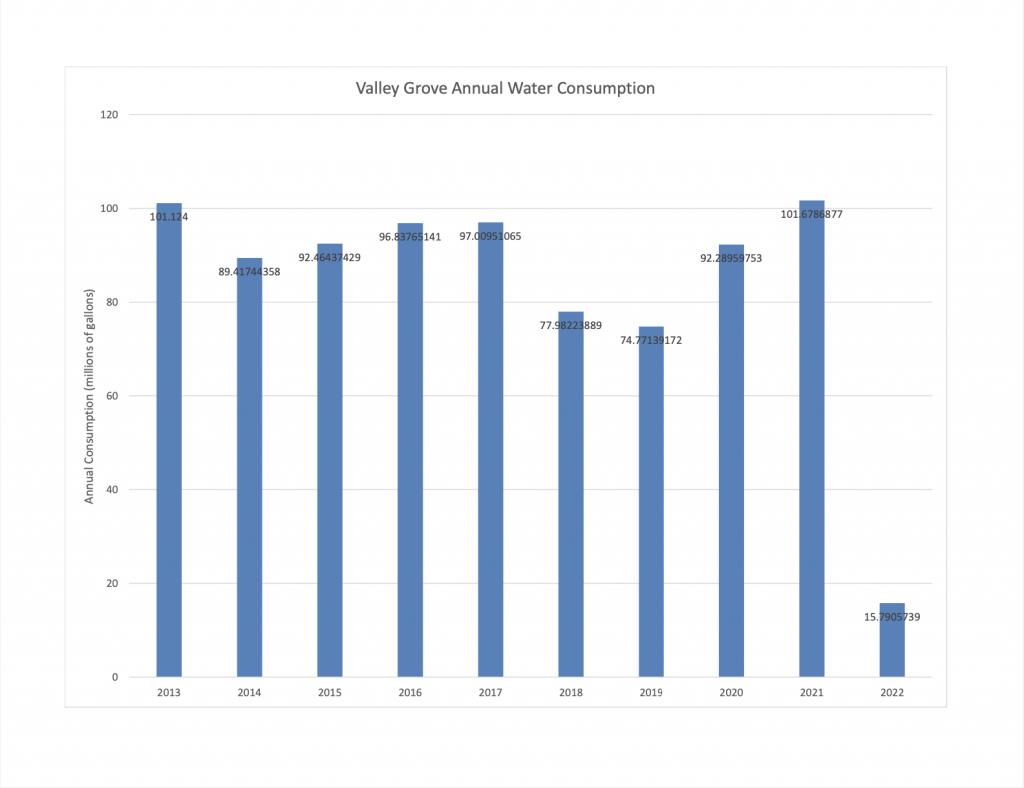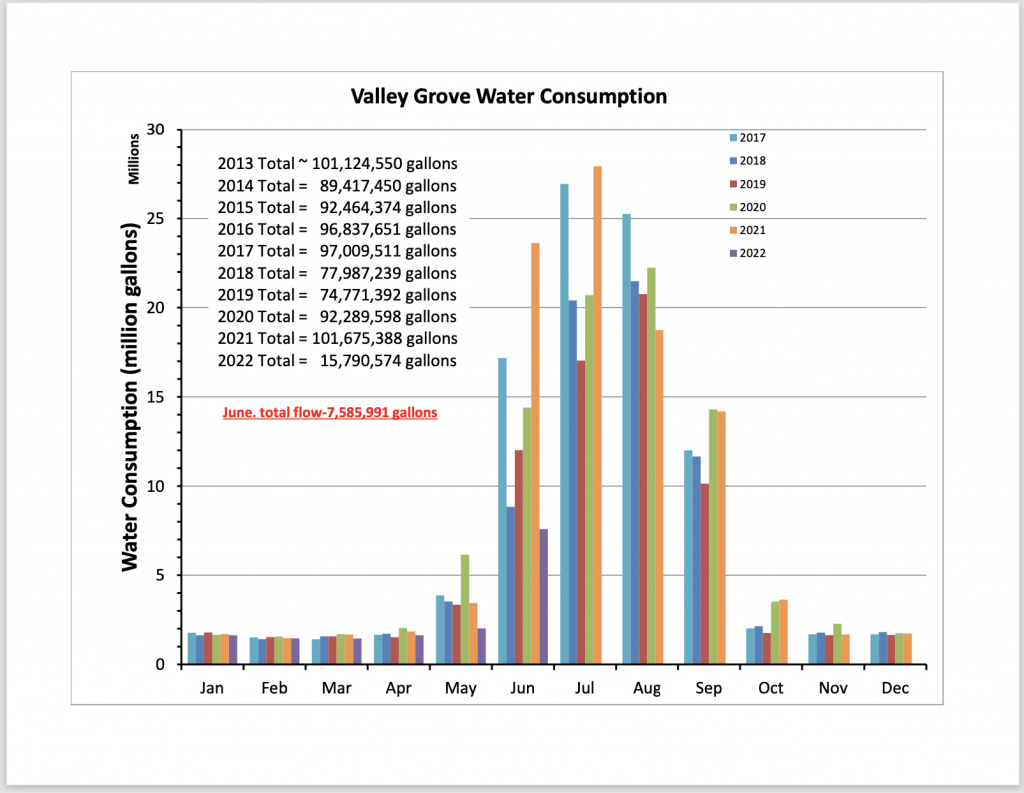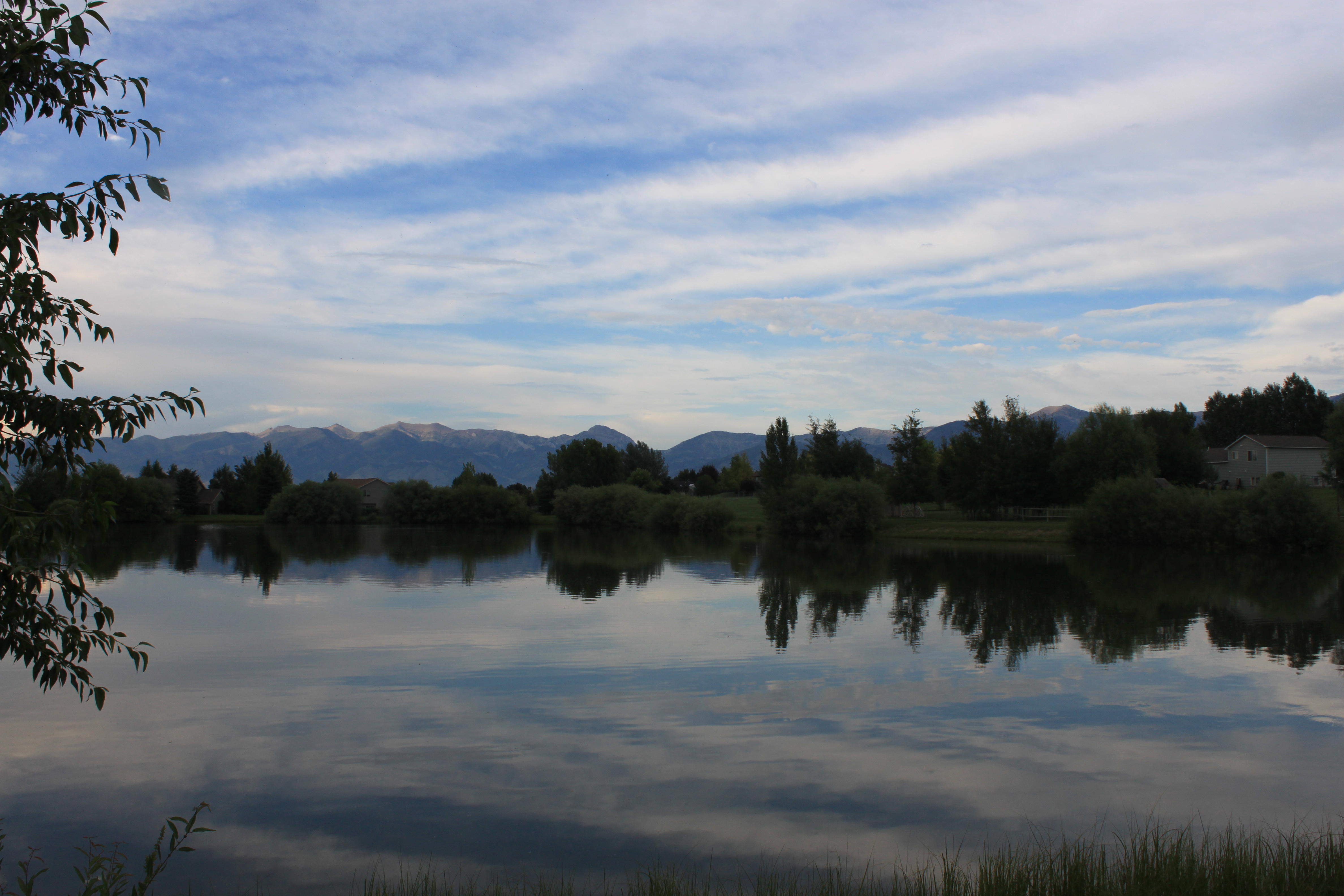

We are so grateful for the team that works continually to make sure our water is safe for drinking. Follow the Link to see the 2023 Test results >> Test Results Here
Water Rights:
Valley Grove Subdivision has several wells that it pulls from for water source. When Phase 4 was approved to begin construction, a new well was installed to serve the area. A condition for approval by state agencies was that watering regulations needed to be put in place. In order to keep our water rights and cost ($) the same, conservation is essential.
*Please note that cost and rights to water are dependent on our neighborhood conservation. If you like the price, conserve the water. Thank you!
Conservation:
*During Watering Season (May-October) we ask that you water every other day and keep the watering time down.


| Summer of 2021 Water Usage: | Conservative Water Usage: | ||||
| Amount: | 27.9 Million Gallons | 19.5 Million Gallons | |||
| Equal to: | covering the entire subdivision in 8″ of water | 4″-6″ water over entire subdivision *Note: Most yards only need 1″-1.5″/wk | |||
Water Usage Suggestion
| Watering Type | # of Sprinklers | Time Watering | Psi | Gallons Per Minute (gpm) | Usage |
| Avg. Rainbird Sprinkler | 1 | 30 min | 50 | 4gpm | 120 gallons |
| 10 | 30 min | 50 | 4gpm | 1200gallons |
*Tips for Conserving Water:
- Water between 4 a.m. and 10 a.m.
- Early morning irrigation takes advantage of less wind, lower air temperature and higher relative humidity, which all lead to slower evaporation.
- Monitor your irrigation system
- Watch your system, adjust your sprinkler heads that are improperly spraying. Check for broken sprinkler heads and leaks in your irrigation lines.
- Aerate your Lawn:
- Aeration helps water go deeper into the soil, allowing the grass roots to absorb more.
- Don’t mow too often, it can dry out your lawn quicker.
- Fertilize in the spring and the fall to prevent your yard from burning.
- Pull weeds, they compete with your lawn for water.
E. Coli Test Results for Valley Grove Pond

It appears that the pond does have quite a high count on the E.coli. The coliforms are high because the pond is affected by surface water, but the E.coli is high because of fecal contamination.
The HOA is currently working with experts to address the E.Coli issue.
In the meanwhile please *Do Not Drink the Pond Water!
Water Testing in Valley Grove
As you know, we are required by state and federal authorities to test our water for various contaminates at prescribed times. These tests are performed by our water operator, Pete Adams, and the reports are posted annually on our web site. We are very proud of our water quality and glad that we do not need to chlorinate our water as the City of Bozeman is required to do.
Every three years Rusty takes water samples at 10 sites to determine lead and copper concentration. At 8 of 10 sites no lead was reported and at 2 of the 10 sites levels were reported but well below any mandated actionable level. When Rusty presented this to the Board he explained where the lead would come from: household plumbing, mainly faucets. THERE ARE NO LEAD SERVICE LINES IN VALLEY GROVE.
He explained the history of the testing and regulation, which started with the 1974 Safe Drinking Water Act.
Maximum contaminant level goal for lead set at zero
Maximum contaminant level (MCL) for lead set at 15 parts per billion
In 1986, an update to the law stated that lead service lines and lead based solder were banned, but lead content in plumbing fixtures was limited to 8%. In 2014, the allowable content of lead in plumbing fixtures was reduced to 0.25% Because most homes in Valley Grove were built before 2014 they can have fixtures with up to 8% lead in their brass components.
Actions the Board of Directors Intends to Make
We are not obligated by law to do anything, however we all agree that we want to insure our water is safe. The Board will have our water operator conduct annual tests, instead of the 3 year cycle the statute requires. Currently water samples are taken from 10 residences and we will double that to 20.
What Homeowners Can Do to Limit Exposure to Lead:
Information is available at the Safe Drinking Water Hotline, 800-426-4791, and also at www.epa.gov/ground-water-and-drinking-water/basic-information-about-lead-drinking-water.
Some items we noted include:
- Use only cold water for drinking, cooking, and making baby formula.
- Make it a practice to run the water at each tap before use for at least 30 seconds.
- Do not consume water that has sat in your plumbing for more than 6 hours.
- Faucets installed before 2014 may contain up to 8% lead in their brass components. Consider replacing faucets used for drinking or cooking water with newer ones certified to meet ANSI/NSF 61 “low lead” requirements.
- Some faucet and pitcher filters can remove lead. If you use a filter, consider purchasing one that is certified by the NSF to remove lead.